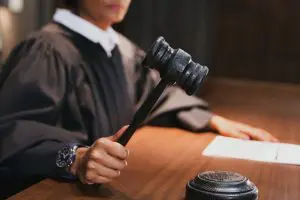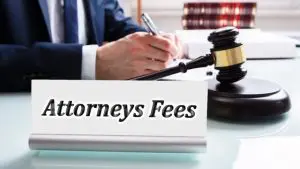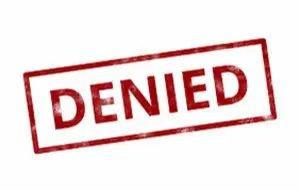Trespassing Charges and Bail Bonds: Navigating Property-Related Offenses
When it comes to property rights and legal boundaries, trespassing is a serious offense that can lead to significant legal consequences. Whether intentional or accidental, entering someone else’s property without permission can result in criminal charges and the need for a bail bond. This article delves into the complexities of trespassing charges, the bail bond process, and how to navigate the legal system when faced with such allegations.
Trespassing is defined as entering or remaining on someone else’s property without their consent or legal right to do so. While it may seem like a minor infraction, trespassing can actually be classified as a misdemeanor or even a felony in some cases, depending on the circumstances and jurisdiction. The severity of the charge often hinges on factors such as the type of property involved, the intent of the trespasser, and any damage or harm caused during the incident.
When an individual is arrested for trespassing, they may find themselves in need of a bail bond to secure their release from custody. A bail bond is a financial guarantee provided to the court that ensures the defendant will appear for their scheduled court dates. Understanding the intricacies of bail bonds and how they relate to trespassing charges is crucial for anyone facing such legal challenges.
One of the first steps in the legal process following a trespassing arrest is the arraignment. This is the initial court appearance where the defendant is formally charged and enters a plea. During the arraignment, the judge will set the bail amount based on various factors, including the severity of the trespassing charge, the defendant’s criminal history, and their ties to the community.
For those unable to pay the full bail amount, a bail bondsman can be a valuable resource. These licensed professionals provide a surety bond to the court, typically for a fee of 10% of the total bail amount. This allows the defendant to be released from custody while awaiting trial, provided they agree to comply with all court-mandated conditions.
It’s important to note that trespassing laws vary by state, and what constitutes criminal trespass in one jurisdiction may differ in another. For example, some states require clear signage or verbal warnings to be given before a trespassing charge can be pursued, while others consider any unauthorized entry onto private property as sufficient grounds for legal action.
In cases of criminal trespass, the prosecution must prove that the defendant knowingly entered or remained on the property without permission. This element of intent is crucial, as accidental trespass or instances where the individual had a reasonable belief they were allowed on the property may serve as valid defenses in court.
When facing trespassing charges, it’s essential to understand the potential penalties that may be imposed. These can range from fines and community service to jail time, depending on the severity of the offense and any aggravating factors. For instance, trespassing on government property or in areas designated as critical infrastructure may carry harsher punishments than trespassing on residential land.
The role of a criminal defense attorney cannot be overstated in trespassing cases. An experienced lawyer can help navigate the complexities of the legal system, challenge the evidence presented by the prosecution, and work towards the best possible outcome for their client. This may include negotiating plea deals, seeking reduced charges, or even having the case dismissed if there is insufficient evidence to support the trespassing allegation.
One aspect of trespassing that often complicates legal proceedings is the concept of implied consent. In some situations, a property owner may give implicit permission for certain individuals to enter their land, such as delivery personnel or utility workers. Determining whether implied consent existed at the time of the alleged trespass can be a critical factor in building a strong defense.
For property owners, understanding how to legally protect against trespassers is equally important. Posting “No Trespassing” signs in visible locations around the property perimeter is a common and effective method of deterring unauthorized entry. These signs serve as clear notice that the land is private and that entering without permission is prohibited.
In addition to signage, property owners may consider installing security systems or surveillance cameras to monitor and document any instances of trespassing. This evidence can be invaluable if legal action becomes necessary, providing concrete proof of the unauthorized entry and potentially identifying the trespassers.
It’s worth noting that trespassing laws often intersect with other areas of criminal law, such as burglary or vandalism. If a trespasser causes damage to the property or enters with the intent to commit a crime, they may face additional charges beyond simple trespass. This can significantly impact the bail amount set and the overall legal strategy required to defend against the allegations.
For those who find themselves in need of a bail bond for a trespassing charge, understanding the bail process is crucial. After the bail amount is set, the defendant or their representatives can contact a bail bond agency to arrange for release. The bail bondsman will typically require collateral to secure the bond, which may include property, vehicles, or other valuable assets.
It’s important to remember that securing a bail bond is not an admission of guilt, but rather a means of ensuring the defendant’s appearance in court while allowing them to continue their daily life and prepare their defense. However, failing to appear for scheduled court dates can result in the forfeiture of the bail bond and additional legal consequences.
In some cases, a judge may impose conditions of release along with the bail bond. These conditions may include restrictions on travel, mandatory check-ins with a probation officer, or orders to stay away from the property where the alleged trespassing occurred. Violating these conditions can lead to the revocation of bail and a return to custody.
For repeat offenders or those with a history of failing to appear in court, judges may be less inclined to grant bail or may set higher bail amounts. In such cases, working with an experienced bail bond agent who understands the local legal system can be particularly beneficial in securing release and navigating the complexities of the bail process.
It’s also worth considering the potential long-term consequences of a trespassing conviction. Even if the immediate legal penalties are relatively minor, having a criminal record can impact future employment opportunities, housing applications, and other aspects of life. This underscores the importance of mounting a strong defense and exploring all available legal options when facing trespassing charges.
One emerging trend in the realm of property law and trespassing is the use of drones for surveillance and security purposes. As drone technology becomes more accessible and sophisticated, property owners are increasingly using these devices to monitor their land for potential trespassers. However, this practice raises its own legal questions regarding privacy rights and the admissibility of drone-captured evidence in court.
Another factor to consider in trespassing cases is the concept of adverse possession. This legal doctrine allows individuals who have occupied a property for an extended period without the owner’s permission to potentially claim ownership rights. While adverse possession laws vary by state, they can complicate trespassing cases, particularly in situations involving long-term squatters or boundary disputes between neighboring properties.
For those facing trespassing charges related to political protests or acts of civil disobedience, the legal landscape can be particularly complex. In such cases, defendants may argue that their actions were protected under the First Amendment right to free speech and assembly. Courts must then balance these constitutional rights against property owners’ rights and public safety concerns.
The rise of social media and location-sharing apps has also introduced new dimensions to trespassing cases. Individuals may inadvertently reveal their presence on private property through geotagged posts or live streams, potentially providing evidence for trespassing charges. This highlights the importance of being aware of one’s surroundings and respecting property boundaries, even in the digital age.
In some jurisdictions, trespass after warning is considered a more serious offense than simple trespass. This occurs when an individual returns to a property after being explicitly told not to do so by the owner or a legal representative. The penalties for trespass after warning are often more severe, and judges may be less inclined to grant lenient bail terms in such cases.
For property owners dealing with persistent trespassers, seeking a restraining order or injunction may be a necessary step. These legal tools can provide additional protection and consequences for those who repeatedly violate property rights. However, obtaining such orders typically requires demonstrating a pattern of behavior and potential harm, which underscores the importance of documenting all instances of trespassing.
When it comes to bail bonds for trespassing charges, the amount required can vary widely depending on the specific circumstances of the case. Factors that may influence the bail amount include the defendant’s criminal history, the nature of the property trespassed upon (e.g., residential vs. commercial), and any aggravating factors such as property damage or the presence of weapons.
It’s important to note that in some jurisdictions, bail reform efforts have led to changes in how bail is handled for lower-level offenses like trespassing. Some areas have implemented pretrial release programs that allow defendants to be released on their own recognizance or with minimal bail for non-violent crimes. Understanding these local policies can be crucial when navigating the bail process for trespassing charges.
For those who cannot afford bail or a bail bond, public defenders or legal aid organizations may be able to assist in seeking a bail reduction or alternative release conditions. These legal professionals can argue for lower bail amounts based on factors such as the defendant’s ties to the community, employment status, and lack of flight risk.
In cases where trespassing charges are related to domestic disputes or landlord-tenant conflicts, the legal proceedings may become more complex. These situations often involve additional factors such as property rights, lease agreements, and family law considerations. Judges may take these circumstances into account when setting bail and determining the appropriate legal course of action.
It’s worth noting that in some cases, trespassing charges may be used as a tool for racial profiling or discriminatory practices. Defendants who believe they have been unfairly targeted may need to consider filing civil rights complaints or seeking assistance from organizations that specialize in addressing systemic biases in the criminal justice system.
For property owners, understanding the concept of duty of care is crucial when it comes to trespassing. While trespassers are generally not owed the same level of care as invited guests, property owners may still be held liable for injuries sustained by trespassers in certain circumstances, particularly if dangerous conditions on the property were not adequately marked or addressed.
In recent years, there has been increased attention on the issue of trespassing on Native American lands. These cases often involve complex jurisdictional questions and may require consideration of tribal law in addition to state and federal statutes. Understanding these nuances is essential for both defendants and legal professionals handling such cases.
The concept of attractive nuisance can also come into play in trespassing cases, particularly those involving children. Property owners may be held liable for injuries sustained by child trespassers if they have features on their land that are likely to attract children, such as swimming pools or abandoned structures. This doctrine underscores the importance of taking reasonable precautions to secure potentially dangerous areas of one’s property.
For those facing trespassing charges related to urban exploration or visiting abandoned properties, it’s important to understand that the property owner’s consent is still required, even if the site appears to be neglected or unused. Many jurisdictions have specific laws addressing trespassing in vacant or abandoned buildings, often with enhanced penalties due to safety concerns.
In some cases, trespassing charges may be brought in conjunction with stalking or harassment allegations. These situations can result in higher bail amounts and more stringent release conditions due to concerns for the victim’s safety. Defendants in such cases may need to work closely with their legal representation to address both the trespassing charges and the related allegations.
The rise of short-term rental platforms like Airbnb has introduced new complexities to trespassing laws. Disputes between property owners, tenants, and short-term guests can sometimes lead to trespassing allegations. Understanding the legal rights and responsibilities of all parties involved in these arrangements is crucial for avoiding potential legal issues.
For property owners dealing with squatters, the process of removing unauthorized occupants can be legally complex. While squatting is a form of trespassing, many jurisdictions have specific laws and procedures for evicting long-term occupants, even if their initial entry was unauthorized. This highlights the importance of addressing trespassing issues promptly to avoid more complicated legal scenarios.
In cases involving trespassing on agricultural land, many states have enacted specific statutes to protect farmers and ranchers. These laws often carry enhanced penalties for trespassing on agricultural property, particularly if there is damage to crops or livestock. Understanding these specialized statutes is crucial for both property owners and potential defendants in rural areas.
The intersection of trespassing laws and environmental activism has become increasingly relevant in recent years. Protesters engaging in acts of civil disobedience, such as chaining themselves to equipment or occupying private land to prevent development, may face trespassing charges. These cases often involve complex legal arguments balancing property rights against freedom of speech and assembly.
For those facing trespassing charges related to homelessness, the legal landscape can be particularly challenging. Some jurisdictions have faced criticism and legal challenges for using trespassing laws to criminalize homelessness, leading to debates about the constitutionality of such enforcement practices. Defendants in these situations may need to work with advocacy organizations specializing in homeless rights in addition to their criminal defense representation.
The use of GPS tracking and geofencing technology has introduced new dimensions to trespassing prevention and enforcement. Property owners can now set up virtual boundaries that trigger alerts when unauthorized individuals enter restricted areas. However, the use of such technology raises privacy concerns and questions about the admissibility of this evidence in court.
In conclusion, navigating trespassing charges and the associated bail bond process requires a comprehensive understanding of property law, criminal procedure, and local legal practices. Whether you’re a property owner seeking to protect your rights or an individual facing trespassing allegations, being informed about the legal landscape is crucial. By working with experienced legal professionals and bail bond agents, those involved in trespassing cases can ensure their rights are protected and work towards the best possible resolution of their legal challenges.
Sources:
- https://www.nolo.com/legal-encyclopedia/criminal-trespassing-law.html
- https://www.justia.com/criminal/offenses/other-crimes/criminal-trespass/
- https://www.law.cornell.edu/wex/trespass
- https://www.ncsl.org/civil-and-criminal-justice/bail-and-pretrial-release
- https://www.law.cornell.edu/uscode/text/18/1752
- https://www.americanbar.org/groups/crsj/publications/human_rights_magazine_home/the-state-of-healthcare-in-the-united-states/racial-disparities-in-health-care/












